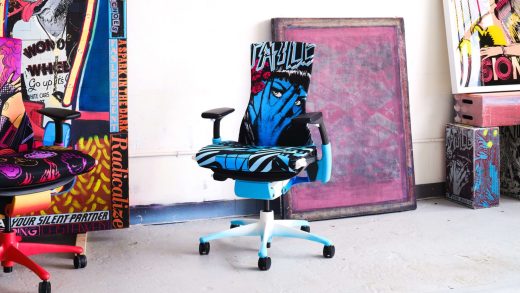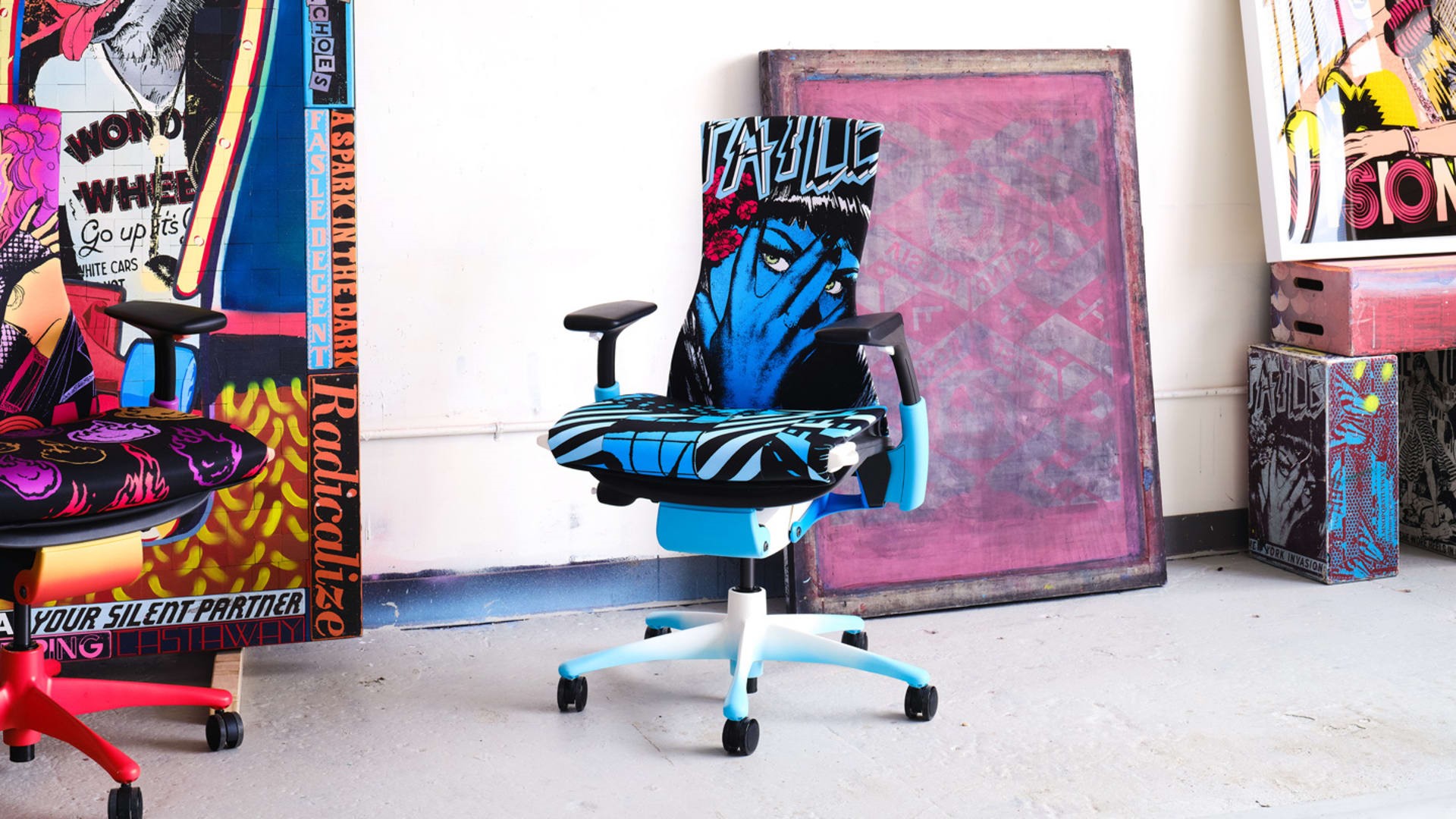Herman Miller’s new collection is inspired by ’80s arcade games
Herman Miller’s new collection is inspired by ’80s arcade games
You’ve never seen a Herman Miller chair like this.
As a brand, Herman Miller is known for its classic designs and ergonomic silhouettes, which have served as design objects in shows like Mad Men and Frasier, and have appeared in the homes of countless celebrities. While the brand is frequently lauded for its aesthetic designs, it’s now taking that feedback to the next level: turning its furniture into literal art through a collaboration inspired by ‘80s arcade culture.
The line of objects, called Designed for a New World, is the result of Herman Miller Gaming’s collaboration with Faile, a studio run by multidisciplinary artists Patrick McNeill and Patrick Miller. It includes 100 custom arcade-style joystick sculptures, three exclusive prints, and 12 conceptual gaming chairs, each fully upholstered with retro game-inspired designs.
Faile’s custom joysticks and prints will be available for purchase online starting October 1, retailing at $995 and $250, respectively. The chairs, which each use a Herman Miller Embody Gaming Chair as a base, aren’t for sale, but are on view from September 27 through September 29 at Herman Miller’s Gansevoort location in New York City. Then they head to the furniture company’s design archives.
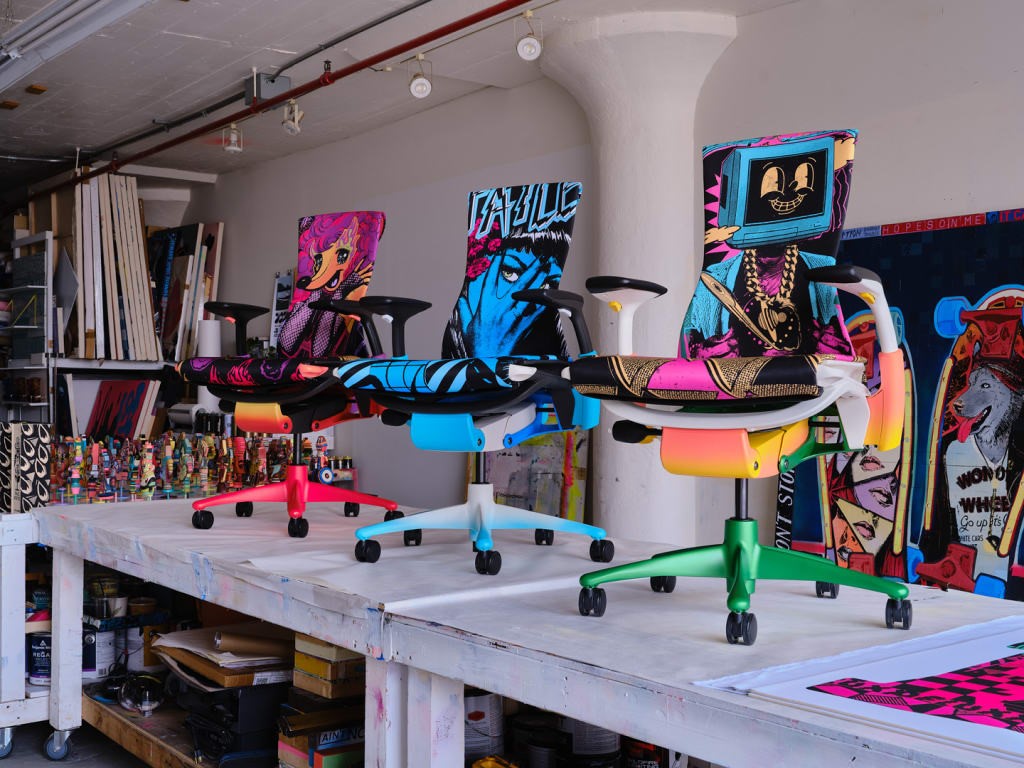
Faile’s arcade-inspired collection
McNeill and Miller previously created the immersive nightlife venue Deluxx Fluxx, which features floor-to-ceiling day-glo art based on ’80s arcade aesthetics, and those color choices and visuals carry through to this collection. It makes for a striking contrast with Herman Miller’s modernist design approach and typically subdued color choices, like black, brown, or white. That change reimagines the furniture itself as a kind of canvas.
“When Herman Miller Gaming reached out to us, it was originally to work on their print collection,” McNeill says in the collection’s release video. “But there was so much inspiration and exciting things to look at within their gaming division that we expanded the scope and found a pathway where we could bring Faile, Deluxx Fluxx, and Herman Miller Gaming together.”
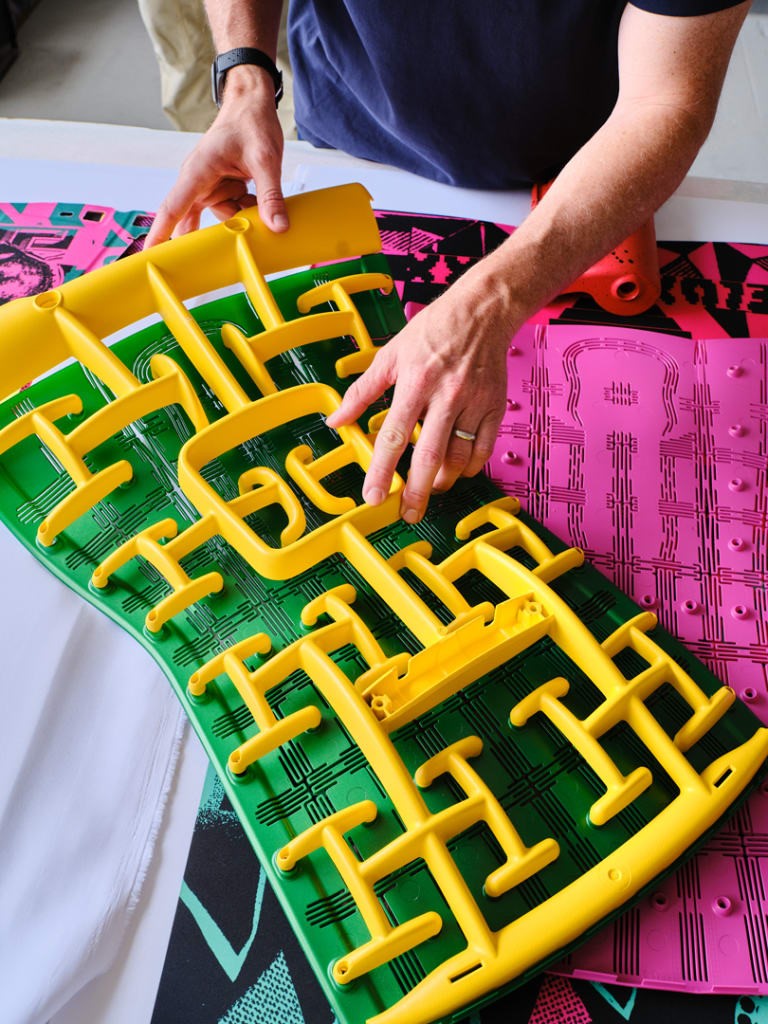
McNeill and Miller combined drawing, cut-and-paste collage, and silkscreen printmaking to create their three prints for the collaboration. The artwork includes callouts to the pop-art and graffiti genres (see the character featured in the “Deluxx Visions” print and the lettering in the word “Metropolis,” respectively), as well as nods to retro tech—like a cartoonish ‘80s computer monitor.
“Old club flyers and street ephemera” were the basis of this visual language, the artists said in a joint statement to Fast Company. “Hopefully each print captures a more visceral feeling of the imaginative worlds that come to life when gaming,” McNeill and Miller add. “They are about losing yourself in another world, finding that flow state, and bringing to life characters within.”
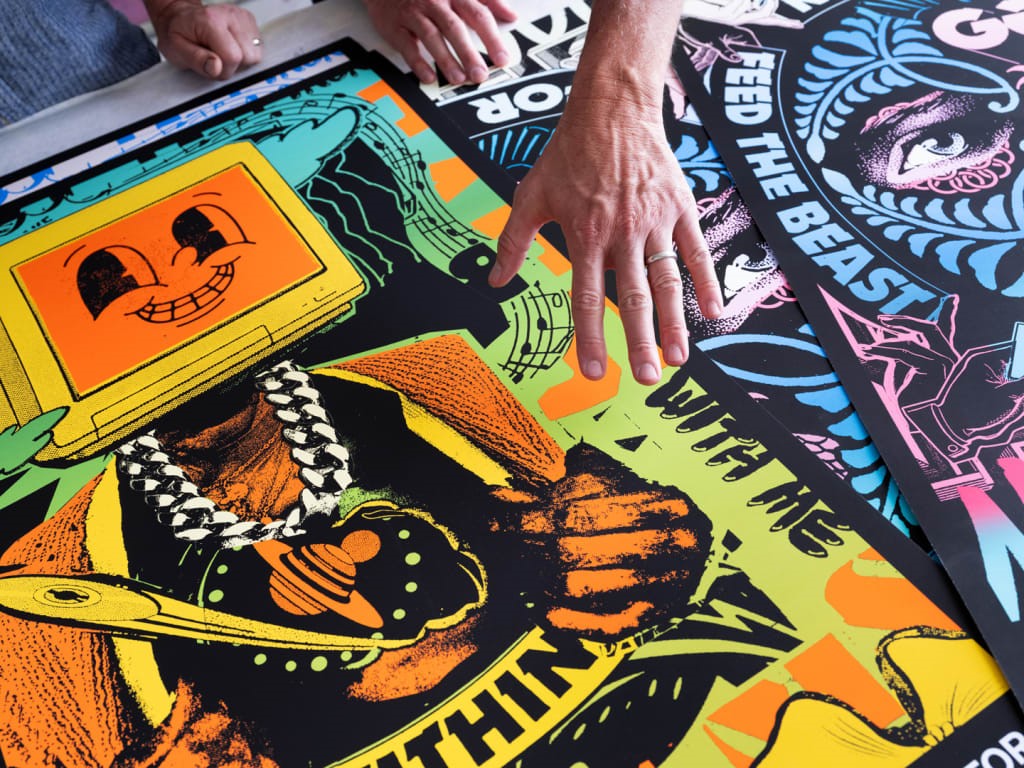
The collection’s hand-carved and painted wooden joysticks are based on the tactile UI of a classic arcade game, but have been reimagined to act as artwork within the home. Their sculptural forms take cues from artist Alexander Girard’s wooden dolls (also housed within Herman Miller’s collection), but each doll is its own unique video game-esque character dreamed up by McNeill and Miller.
“While we are creating—whether it is a mural, a painting or a sculpture—sketches of these characters always seemed to be in the background of our sketchbook pages,” the artists explain. “The joysticks are based off our drawings and collages, bringing to life characters that feel at home in our Deluxx Fluxx world.”
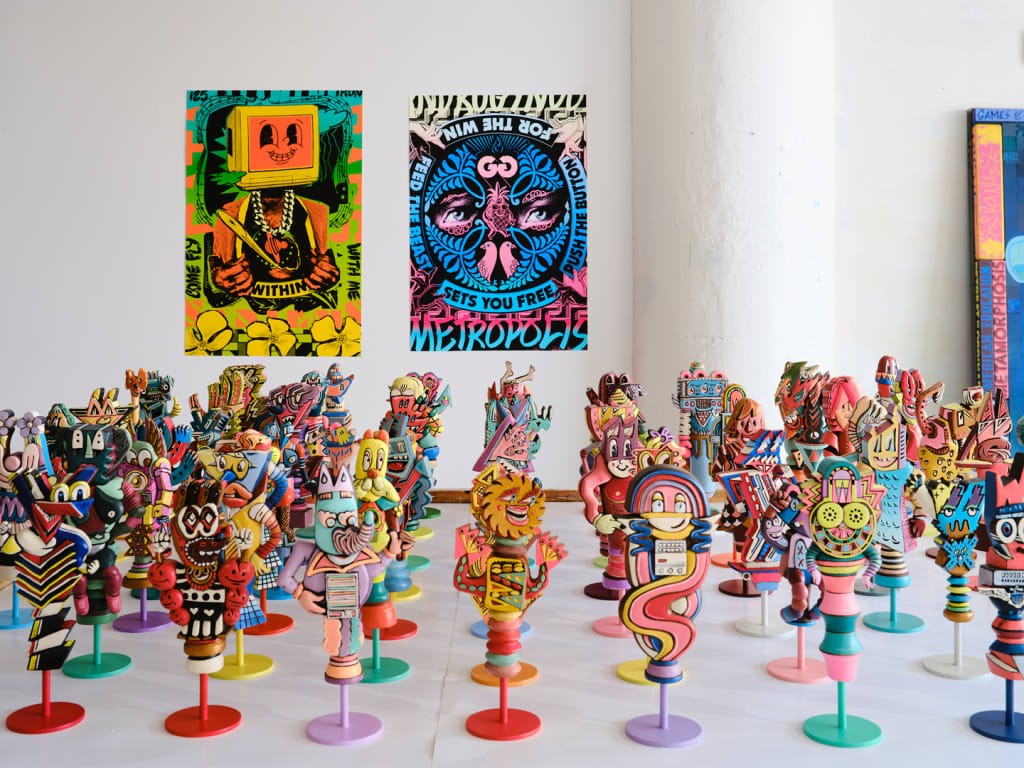
Herman Miller as canvas
For their 12 interpretations of the Embody Gaming Chairs, McNeill and Miller were inspired by skateboard decks, game packaging, and, of course, arcade cabinets. Each of the chairs features vibrant custom upholstery on the backing and seat, as well as colorful structural hardware to match.
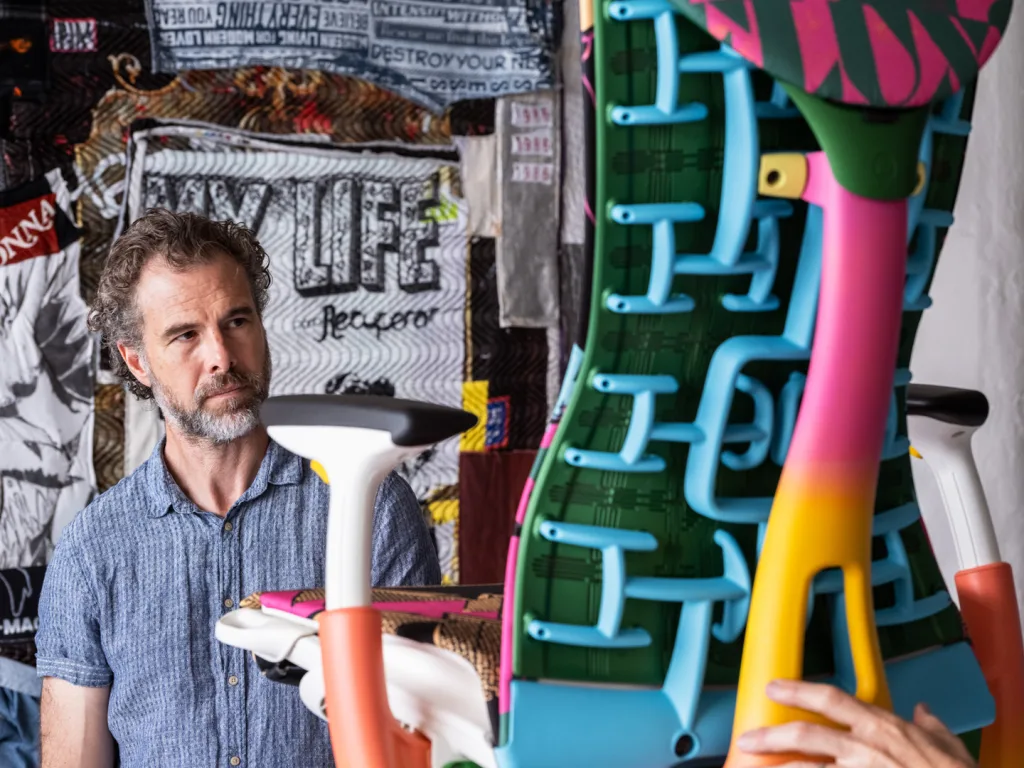
“We’ve created a large body of sculptural works over the years. We looked at the Embody Gaming Chair through a similar lens to how we’d approach creating a skateboard deck, our prayer wheels, or an arcade cabinet as sculptural object,” McNeill and Miller share. “You’re celebrating the surfaces, the lines and the shape as your canvas, looking at how color and image speak to those dimensional features.”
In the collection’s press release, the artists added that there’s an element of “color and fantasy” that they didn’t yet see reflected in Herman Miller’s existing Embody chair design, which was originally created with the primary goal of making professional gaming comfortable.
The Faile team added, “We saw this as an opportunity to bring that to life and showcase the chair not only as a design object but also as an art object.”
ABOUT THE AUTHOR
(2)

